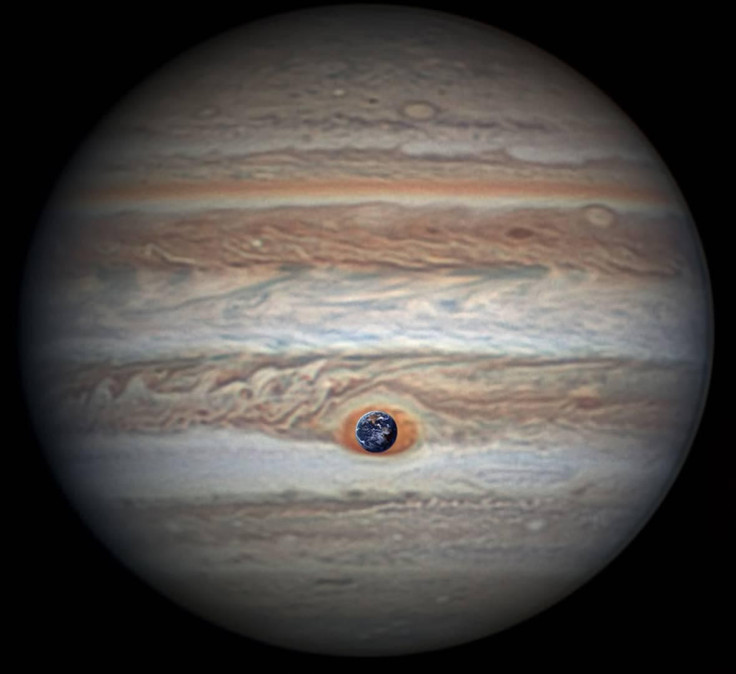Jupiter’s Great Red Spot Shrinking And Getting Taller Simultaneously

The massive swirling storm, Jupiter’s Great Red Spot, has been contracting for over a century and could likely even completely disappear. Although no one knows what the future holds for the storm — whether it will continue contracting or stop shrinking — NASA has discovered that even as the Great Red Spot shrinks, it is getting taller.
Astronomers first spotted the Great Red Spot in 1831 and scientists have since been able to study it further to measure the massive storm’s size and drift. Now, a group of scientists traced the evolution of Jupiter’s Great Red Spot by combining years of archived observations and combining them with data from NASA’s 1979 Voyager missions.
The researchers were able to analyze the massive storm’s size, shape, color and drift rate, as well as observe its internal wind speeds.
“Storms are dynamic, and that’s what we see with the Great Red Spot. It’s constantly changing in size and shape, and its winds shift, as well,” Amy Simon, an expert in planetary atmospheres at NASA’s Goddard Space Flight Center, and lead author of a new study, said in a statement.
“There is evidence in the archived observations that the Great Red Spot has grown and shrunk over time,” said co-author Reta Beebe, an emeritus professor at New Mexico State University. “However, the storm is quite small now, and it’s been a long time since it last grew.”
The new research’s findings hint that the Great Red Spot has recently begun drifting westward at faster speeds than ever before. Although the storm always remains stationary at the same latitude, held by jet streams that flank it on the north and south, it also circles the globe in the opposite direction to Jupiter’s eastward rotation.
“Historically, it’s been assumed that this drift is more or less constant, but in recent observations, the team found the spot is zooming along much faster,” NASA said. “The study confirms that the storm has been decreasing in length overall since 1878 and is big enough to accommodate just over one Earth at this point. But the historical record indicates the area of the spot grew temporarily in the 1920s.”
Since the Great Red Spot has been shrinking, researchers expected that the storm’s powerful internal winds would likely gather even more strength. However, instead of spinning faster, the storm has been stretched up.
“It’s almost like clay being shaped on a potter’s wheel. As the wheel spins, an artist can transform a short, round lump into a tall, thin vase by pushing inward with his hands. The smaller he makes the base, the taller the vessel will grow,” NASA said.
Although the storm’s altered height is relatively small to the area covered, it is still noticeable.
Apart from shrinking and now elongating, the Great Red Spot’s color has also been darkening since 2014, turning more and more intensely orange. Although researchers are still not sure what is causing this, some suspect that the chemicals that color the storm could likely be carried higher into the atmosphere as the storm stretches. The chemicals would likely be exposed to more UV radiation at higher altitudes and this could deepen the storm’s color.
“If the trends we see in the Great Red Spot continue, the next five to 10 years could be very interesting from a dynamical point of view,” said NASA’s Rick Cosentino, co-author of the new study. “We could see rapid changes in the storm’s physical appearance and behavior, and maybe the red spot will end up being not so great after all.”
The findings of the new research were published in the Astronomical Journal.
© Copyright IBTimes 2024. All rights reserved.




















